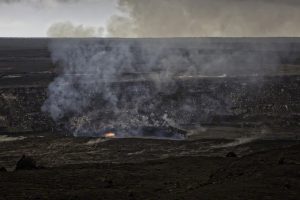Existential Opportunities
- At August 25, 2017
- By Firstmate
- In Canon EOS 5DS, Hawaii, Long Exposure
 0
0
Hawaii presents itself as a paradise, and aptly so, since one can fashion his/her ideas around what they consider to be paradise wherever they find themselves: namely, there is something about an: island-an almost perfect climate-and the isolation/uniqueness of terrain— which lends itself to believe fantasy-can-come-true (“Fantasy Island”, if you will).
Such thinking can become dangerous to a photographer since they are supposed to be there to catch the shot. Is it the shot of their fantasy or is it the shot of what is. To be truthfully honest with you, I believe it is a combination of both, which in and of itself even poses more complexity onto the existential moment. Such is the excitement of photography.
And that is what my photographic journey in Hawaii was about: namely, a myriad of possible shots around a single event; trying to get the most of that time slot and location, and understanding how to best capture the scene visually onto a two dimensional medium. This may be a clinical and sterile description, but technically that is all the camera really cares about, since it is not a thinking and feeling entity.
The time in Hawaii was divided into two parts: my photographic workshop and my personal vacation time. In the former part I was exposed to optimal light shooting conditions, namely soft light in early morning and evening. In the latter part, I was at the whims of when it was convenient for me to be at various sites to actually fit the sites into my time stay in Hawaii (generally at mid-day time of lighting conditions).
How to adjust to the above very different ways of taking photographs? I did my best, meaning I tried to focus on certain elements of the shot, even though the light was not the best.
The currently posted shot is of a beach on the eastern shore of Oahu, around the Makapu’u Beach, where the sun was in and out of the clouds, with even rain clouds threatening every minute (such is Hawaii). The wind and wave action were dynamic, at least for an Eastern Coast Mainlander. The light was not perfect but the wave motion was. This is what I tried to capture.
The shot was taken with a Canon 5 DS, EF24-105mm f/4L IS USM, @ 93mm, f/22, 1/8″, ISO 50. I may have had a 3-stop neutral density filter on, but I am not sure about this.
Hawaiian Adventure
- At August 14, 2017
- By Firstmate
- In Canon EOS 5DS, DxO Optics Pro, Hawaii, Nik Software
 0
0
A little over a month ago I returned from Hawaii and since then have been processing photos taken there. It was an adventure in the real sense of the word since the State of Hawaii is so unique in many ways. I had signed up to take the Canon Live Learning Workshop and knew it would be challenging simply due to the hours I would be up (early mornings and late nights), but also the conditions (heat, terrain) and distances I would have to travel. Without going into detail, let it suffice to say the first day of the shoot, I was up at 3:30 AM and came back to my hotel room at 1 AM the next day.
The shoot started at Laupahoehoe Point on the Big Island, proceeded to Akaka Falls, then to Punalu’u Black Sand Beach, then finally at Kilauea Volcano in Volcanoes National Park. It was an exhausting day but one which challenged me to think on my feet, meaning that I actually started seriously using manual mode and also playing with the three components of EV (exposure value), namely shutter speed, f-setting, and ISO, in a creative manner. I made many mistakes, and there were lost opportunities, but ultimately I knew when the opportunities were lost.
While I would have liked to have made more creative shots, I can honestly say I grew in my understanding of applied photography despite not making the best shots I could have.
The current shot is of Kilauea Volcano taken in the afternoon of the day before my night shoot of the volcano and Milky Way. My supportive wife was with me and it was my first introduction to Kilauea, my position being right in front of the so-called rangers station some distance from the volcano, simply because the emitting gases would not allow a closer approach.
The shot was taken with a Canon 5 DS, EF24-105mm f/4L IS USM @ 105mm, f/8, 1/400, 1600 ISO, manual exposure, and no tripod.



Recent Comments